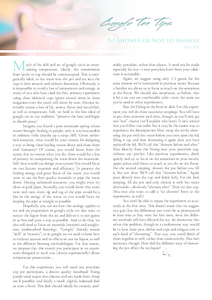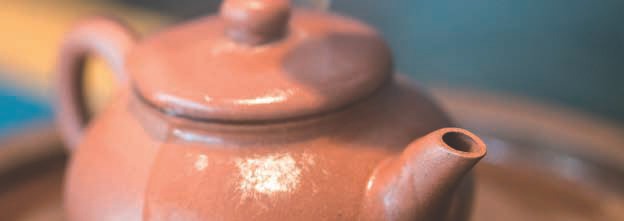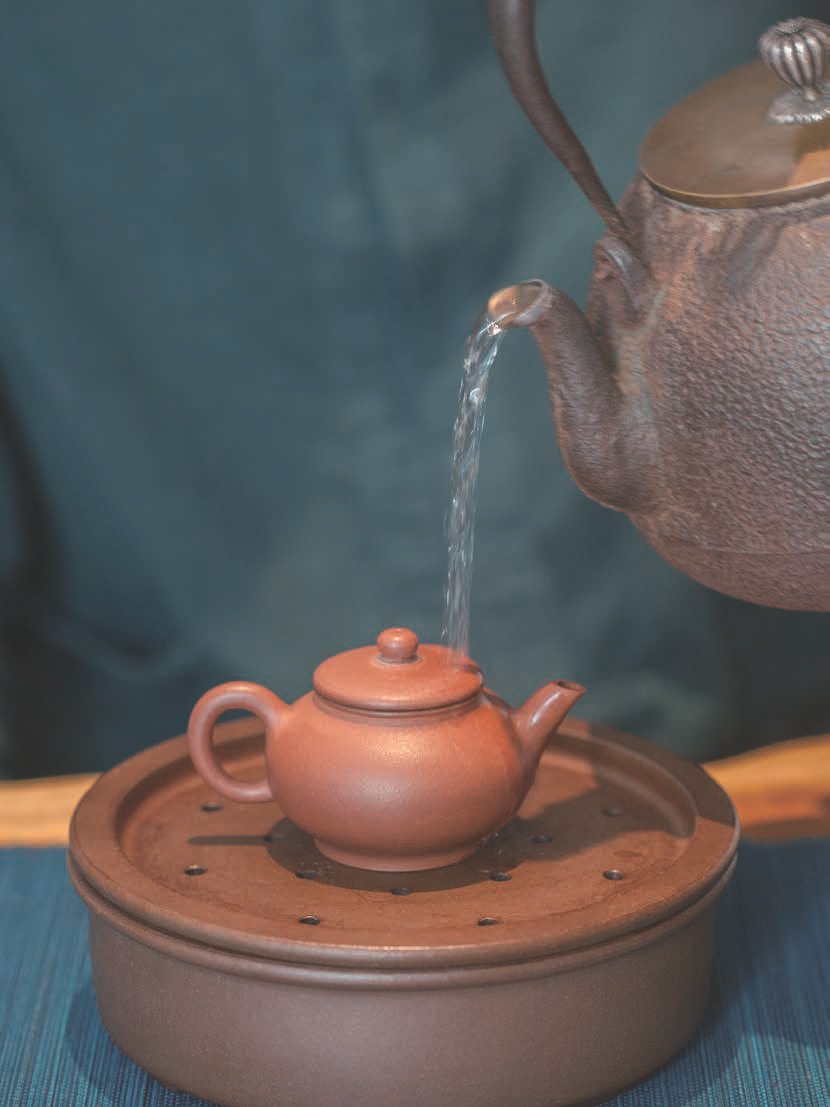
 |
|

Much of the skill and art of gongfu tea is in maintaining temperature. Ideally, the transmission from kettle to cup should be uninterrupted. This is energetically ideal, as the water into the pot and tea into the cups is then smooth and without distortion. Obviously, it is impossible to avoid a loss of temperature and energy, as many of you who have tried the first, primary experiment using three identical cups (given several times in these magazines over the years) will know by now. Friction inevitably causes a loss of Qi, aroma, flavor and mouthfeel, as well as temperature. Still, we hold to the first ideal of gongfu tea in our tradition, "preserve the heat and begin to absorb peace."
Imagine you found a pure mountain spring whose waters brought healing to people, only it was inaccessible to ordinary folks (maybe up a steep cliff). Given unlimited resources, what would be your criteria for designing a way to bring these healing waters down and share them with humanity? Of course, you would know from the outset that no matter what you do, there would be a loss of potency in transporting the water down the mountain. Still, how would you design your system? You would focus on two factors: materials and efficiency. To preserve the healing energy and great flavor of the water, you would want to use the best quality materials to pipe the water down. Having unlimited resources, you might even try silver or gold pipes. Secondly, you would know that every twist and turn, every zig and zag of the pipe would be a loss in the energy of the water, so you would focus on keeping the pipe as straight as possible.
Hopefully, you can see how this analogy applies to tea and tea preparation in gongfu style: we also want to extract the liquor from the tea and deliver it to our guests in as fine and pure a way as possible. And to do that, we also will need to focus on materials (teaware) and straightness (undisturbed brewing). "Gongfu" literally means "skill" or "mastery", so in gongfu tea we need to learn how to evaluate teaware and its effects on our tea liquor, as well as the different brewing methodologies. For that reason, we propose that this month you participate in an experiment designed to teach you (always experientially) about temperature preservation...
For this experiment you will need one porcelain cup per participant, a decent quality handmade Yixing purple-sand teapot (not slipcast and not made from cheap ore if possible) and finally a small, slightly indented dish or even a bowl. This dish should ideally be ceramic, preferably porcelain, rather than plastic. It need not be made especially for tea - a nice porcelain bowl from your tableware is acceptable.
Again, we suggest using only 1-2 grams for the same reasons we've mentioned in previous issues, because a familiar tea allows us to focus as much on the sensations as the flavor. We should also emphasize, as before, that it be a tea you are comfortable with - even the same tea you've used in other experiments.
Rest the Yixing in the bowl or dish. For this experiment you will do three successive steepings. You will have to pay close attention each time, though, as you'll only get one "real" chance (we'll explain why later). It isn't critical that you follow our order, but it may be the easiest way to experience the discrepancies: First, steep the tea by showering the pot with hot water before you even open the lid, filling it up, and then showering it again after you have replaced the lid. We'll call this "showers before and after." Pour directly from the Yixing into your porcelain cup, without any pitcher. Like previous experiments, drink quietly and try to focus on the sensations in your mouth, upper palate and throat as much as you do on the flavor. For the second steeping, shower the pot before you fill it, but not after. We'll call that "showers before." Again pour directly into the cup and drink fully. For the final steeping, fill the pot and only shower it with hot water afterwards - obviously "showers after." Then try that cup. (You may also want to add a "no showers" brew to the experiment, as well.)
You won't be able to repeat the experiment as accurately as the first time. This doesn't mean that we suggest you quit, but the differences just won't be as pronounced in later tries as they were the first time, since the different methods will have affected the tea. An alternative that solves this problem, though in a cumbersome way, would be to have three pots, dishes and cups and relegate one to each kind of "showering". That way, you could drink of them together as well, rather than consecutively. That isn't necessary, though. How did the different ways of showering the pot affect the tea liquor?

